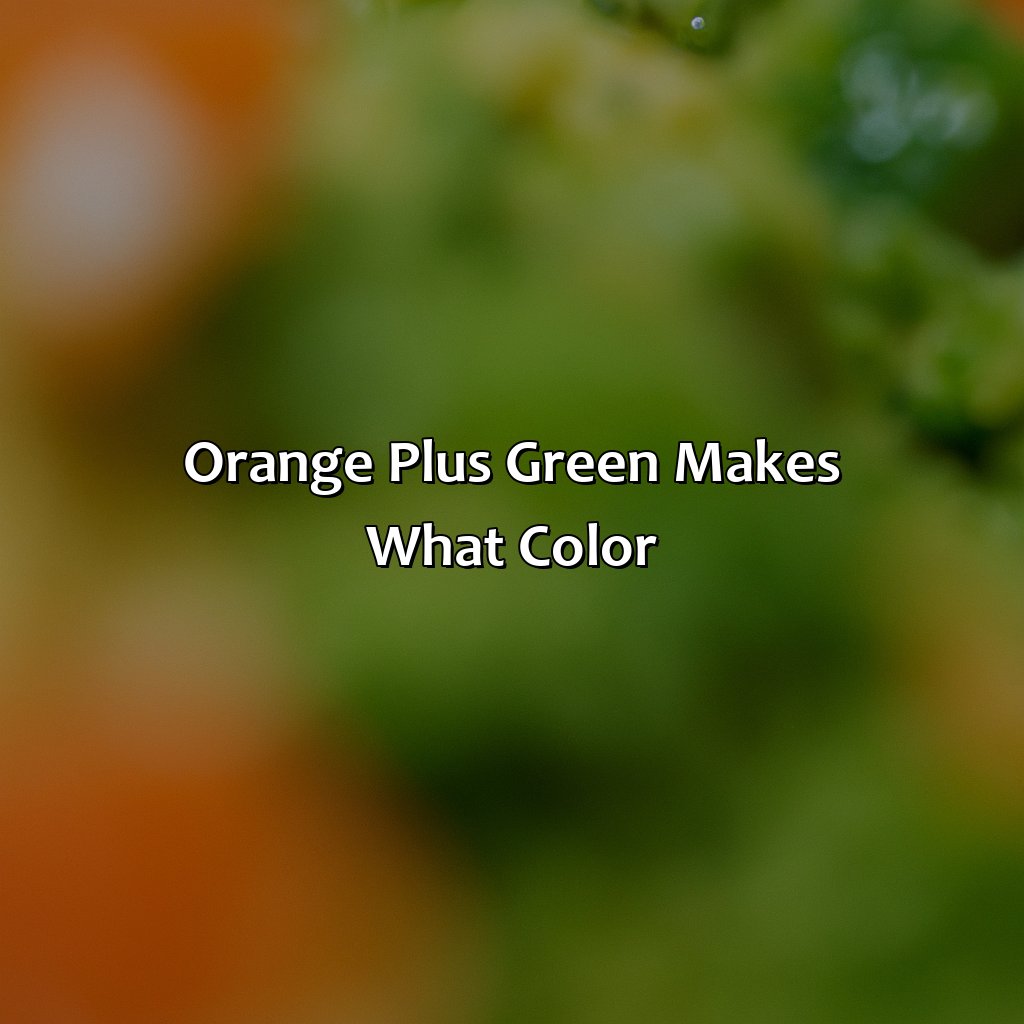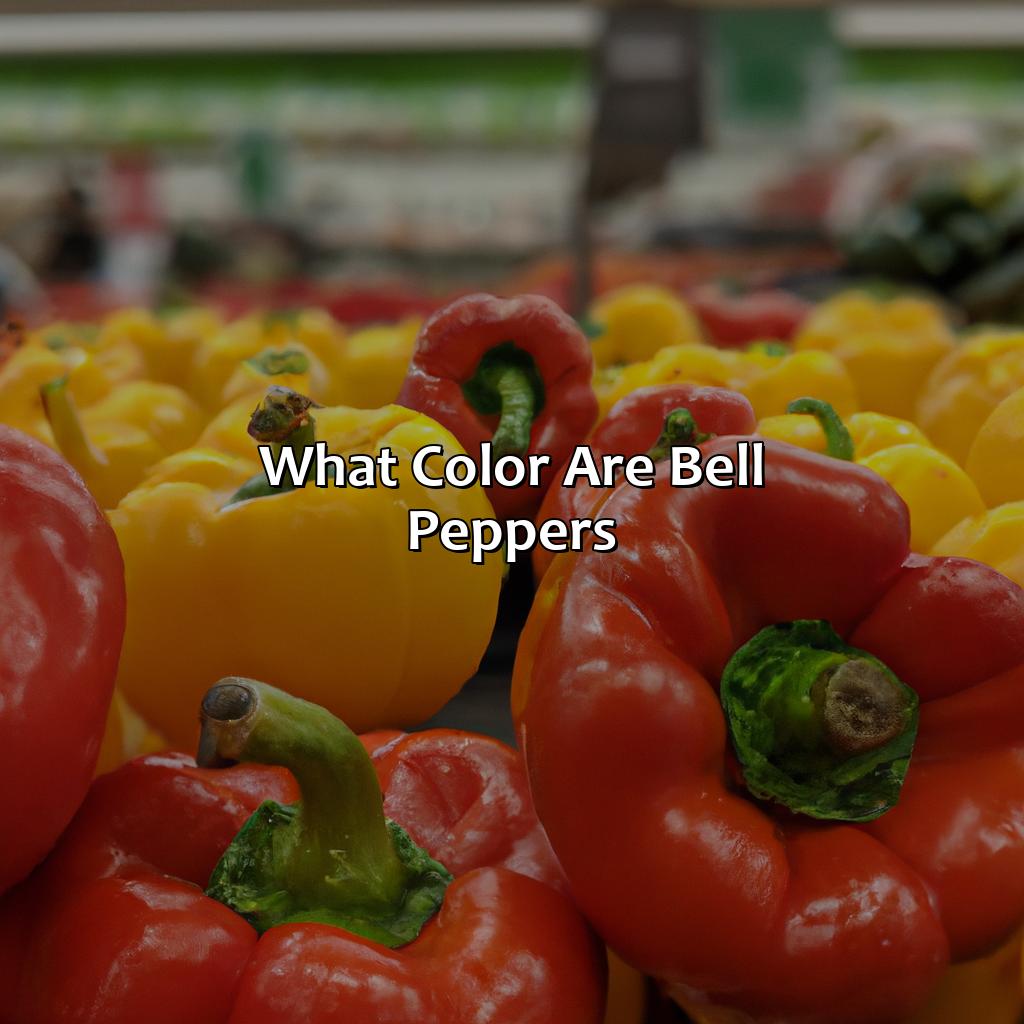Key Takeaway:
- Color plays an important role in representing food and can affect our perception of taste and appetite. Food color psychology studies the effect of color on consumer behavior and can be used in branding, packaging, and marketing.
- Basic food colors include red, green, yellow, and orange. Red food coloring is associated with passion and urgency, while green food coloring conveys freshness and health. Yellow and orange food coloring signify warmth and happiness.
- Advanced food colors such as purple, white, black, and brown can add depth and sophistication to food presentation. While purple food color represents royalty and luxury, white food color conveys purity and simplicity. Black and brown food colors can create a sense of richness and indulgence.
Basic colors that represent food
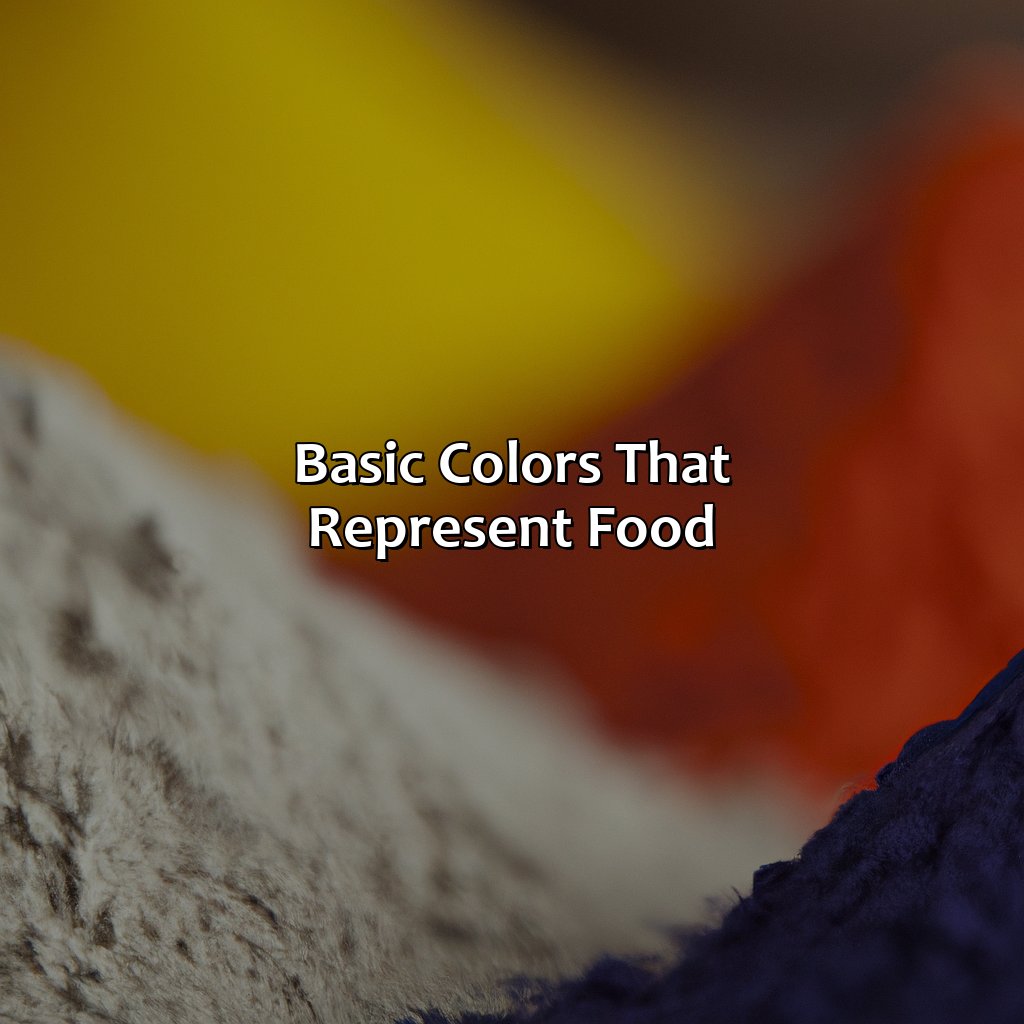
Photo Credits: colorscombo.com by George Torres
Signifying food’s essence in a visible form, colors like red, green, yellow, and orange are used. Red food coloring is employed to show hunger and whet the appetite. Meanwhile, green symbolizes freshness and cleanliness. Bright yellow and orange signify playfulness, joy, and warmth.
Red
The color red is commonly associated with food due to its ability to stimulate the appetite and create a sense of urgency in consumers. Red hues also evoke feelings of excitement, passion, and energy, making it a common choice for food packaging and advertising. However, the use of red food coloring has been linked to health concerns such as hyperactivity in children. Despite this, red remains a popular color choice in the food industry.
Some examples of red foods include tomatoes, strawberries, watermelon, and cherries. These foods are often marketed as being high in antioxidants and promoting heart health. The hue of these foods can vary depending on factors such as ripeness and processing methods.
A unique detail about red foods is that they contain lycopene which is an antioxidant that has been shown to reduce the risk of certain cancers. For example, consuming cooked tomatoes (which contain high levels of lycopene) has been linked to a lower risk of prostate cancer.
(Source: Healthline)
Green food coloring: because why eat healthy when you can just make it look healthy?
Green
In the world of food, green is a basic color that represents freshness and healthiness. Green vegetables such as broccoli, spinach, and kale are known for their high levels of nutrients and detoxifying properties. Green leafy salads are popular choices for those looking to maintain a healthy diet.
Green also represents nature, making it a popular choice for organic and natural food products. It is a common color in food packaging, especially for products that market themselves as sustainable or environmentally-friendly.
When it comes to food coloring, green is often used to represent natural flavors such as mint or lime. Artificial green food coloring has been controversial due to health concerns related to certain synthetic dyes.
One unique detail about green in food is its association with St. Patrick’s Day and Irish culture. Many traditional Irish dishes incorporate the color green through ingredients like cabbage or herbs like parsley.
According to a study by Cornell University, adding more greens to your plate can lead to increased feelings of satisfaction and fullness compared to other colors like red or yellow. (Source: Cornell University Department of Psychology)
Why settle for just one color when you can have both sunshine and citrus in your dish with the yellow/orange food color palette?
Yellow/Orange
Yellow and orange food colors are often associated with sunshine, warmth, and happiness. These colors in food can evoke feelings of positivity and hunger. For instance, citrus fruits like oranges are a great source of vitamin C and are known for their bright orange color that often results in improved appetite.
Foods with yellow or orange hues tend to be high in antioxidants such as beta-carotene that help boost overall health. Yellow foods like bananas are rich in potassium, and the bright yellow color of turmeric is believed to have anti-inflammatory properties.
Interestingly, yellow-colored foods like lemons and pineapples have also been used in traditional medicine for treating illnesses. Thus, incorporating yellow and orange food colors into our diets may offer a range of health benefits.
However, excessive consumption of these foods may result in carotenemia which causes skin pigment discoloration due to accumulation of beta-carotenes. Moderation is recommended while consuming foods with high intake limits.
To incorporate more yellow or orange-colored foods into your diet include sweet potatoes, carrots as well as peppers like bell peppers that produce an assortment of colorful dishes to spice up meals!
If you’re feeling adventurous, try a plate of purple pasta or black bean soup – these advanced food colors are sure to make your Instagram feed stand out.
Advanced colors that represent food

Photo Credits: colorscombo.com by Noah Rodriguez
Unlock the magical meaning of colors for food. Dive deep into the shades of purple, white, black and brown.
- Luxury, royal and creative? Purple!
- Simplicity, purity and freshness? White!
- Sophistication, earthiness and boldness? Black and brown!
Each color has its own unique power to represent food. Make sure you pick with care!
Purple
Purple food color is one of the advanced colors that represent food. It is a rare color in nature and not widely used in the food industry. However, it has gained popularity due to its unique and exotic appearance.
The use of purple food color has been limited to certain food items such as berries, grapes, eggplants, and plums. It can also be obtained from natural sources such as beetroot, purple cabbage, and blackberries. Synthetic purple food color is made by combining red and blue colors.
It is well known that purple represents royalty and luxury, which makes it an ideal choice for upscale products such as wine and chocolate. Moreover, studies have shown that the color purple enhances creativity and inspires artistic expression.
Pro Tip: Incorporate small amounts of purple food color into your desserts or drinks to add a touch of sophistication and elegance to your presentation. White food may not be the most exciting, but at least you won’t have to worry about stains on your clothes.
White
The color white in food is often associated with purity, cleanliness, and simplicity. White food color can be found in a variety of foods such as milk, rice, potatoes, cauliflower, and chicken. It is a neutral color that does not evoke strong emotions or appetites.
In terms of nutrition, white fruits and vegetables such as onions and garlic contain allicin which has potential health benefits such as reducing the risk of heart disease and cancer. However, refined white foods like sugar and flour have little nutritional value.
Unique details about white food color include its use in creating contrasts in the dish and emphasizing other colors like red or green. Also, incorporating different shades of white can add dimension to the plate.
A true history about white food color is its significance in Japanese culture where traditional meals use minimal seasoning or sauces to emphasize the natural flavor of ingredients. This approach heavily features white food like tofu cooked with little adornment except for soy sauce or miso soup made with minimal ingredients – reflecting Japan’s historical appreciation for simplicity.
Who says black and brown food is boring? They add the perfect touch of darkness to any dish, just like my soul.
Black/Brown
| Black Food Color | Brown Food Color |
| Squid ink | Cocoa powder |
| Black beans | Cinnamon |
| Olives | Nutmeg |
Interestingly, black food color represents a substantial fusion in flavor that can either be bold or subtle, whereas brown food color is associated with rusticity and naturalness.
The use of these colors must rely on the motifs of your dish as utilizing too much black/brown coupled both together might make the dish visually unappealing.
Historically, black food color was used solely for dying fabrics or bags used to transport salt due to its low cost. This changed when chefs started using it in their dishes adding not only originality but a punch of flavor that made all the difference. Brown hues were initially gathered from nature such as dried leaves, flowers, spices until cocoa beans were contributed by cocoa plantations in Mexico traded around the world creating abundant availability for natural brown dyeing options in large quantities.
Blue and gray might look good on your walls, but they won’t make your food look appetizing.
Colors that do not represent food

Photo Credits: colorscombo.com by Adam Wright
Distinguish food from non-food items using colors which don’t symbolize food. This article, “What color represents food?“, talks about blue (blue food coloring) and gray (gray food color). Examining how these colors affect our relationship with food helps us understand the role of color in our daily lives.
Blue
As mentioned earlier, blue is not commonly found in natural foods. The use of blue food coloring has allowed for some artificial representation of blue in foods. However, studies have shown that blue-colored foods can actually decrease appetite as it is a rare color in the natural world, usually associated with spoiled or poisonous items.
It is interesting to note that blue used to be considered an appetite suppressing color, but recent research shows that this is only true when consuming unappetizing foods, which may explain why it was typically found in cleaning products before being added to actual food coloring.
The famous ‘blue M&Ms’ were first introduced by Mars in 1995 after requests from children who wanted their favorite color to join the brand’s candy colors scheme. The company had to create a new type of packaging just for the blue because they couldn’t get the dye perfect at first.
Gray food: because sometimes you just want your meal to match your mood.
Gray
The hue of gray in food color is rarely used in the industry. Gray’s undertone may evoke feelings of dullness, dirt or aged food items, making it an unpopular choice for food representation. However, some exceptions are seen, particularly in desserts like macarons and grey cupcakes. The absence of any bold color or conflict with bright colors could be attributed as an unlikely reason for minimal usage.
Gray food color is often created by mixing black and white shades. Food coloring manufacturers tend to avoid using this shade in their products since it can seem unappetizing to potential buyers. In low amounts, gray is used as a tone modifier for colors like blue and green to provide the illusion of old meat or produce.
Pro Tip: Though gray might lead to negative connotations about freshness in the mind of consumers, restaurants and cafes sometimes use charcoal coloring to create a smoky flavor in grilled dishes like steak or barbeque sauces.
From farm to plate, biological and environmental factors can affect the color of your food, so don’t be alarmed if your blueberries are more purple than blue.
Factors affecting the color of food
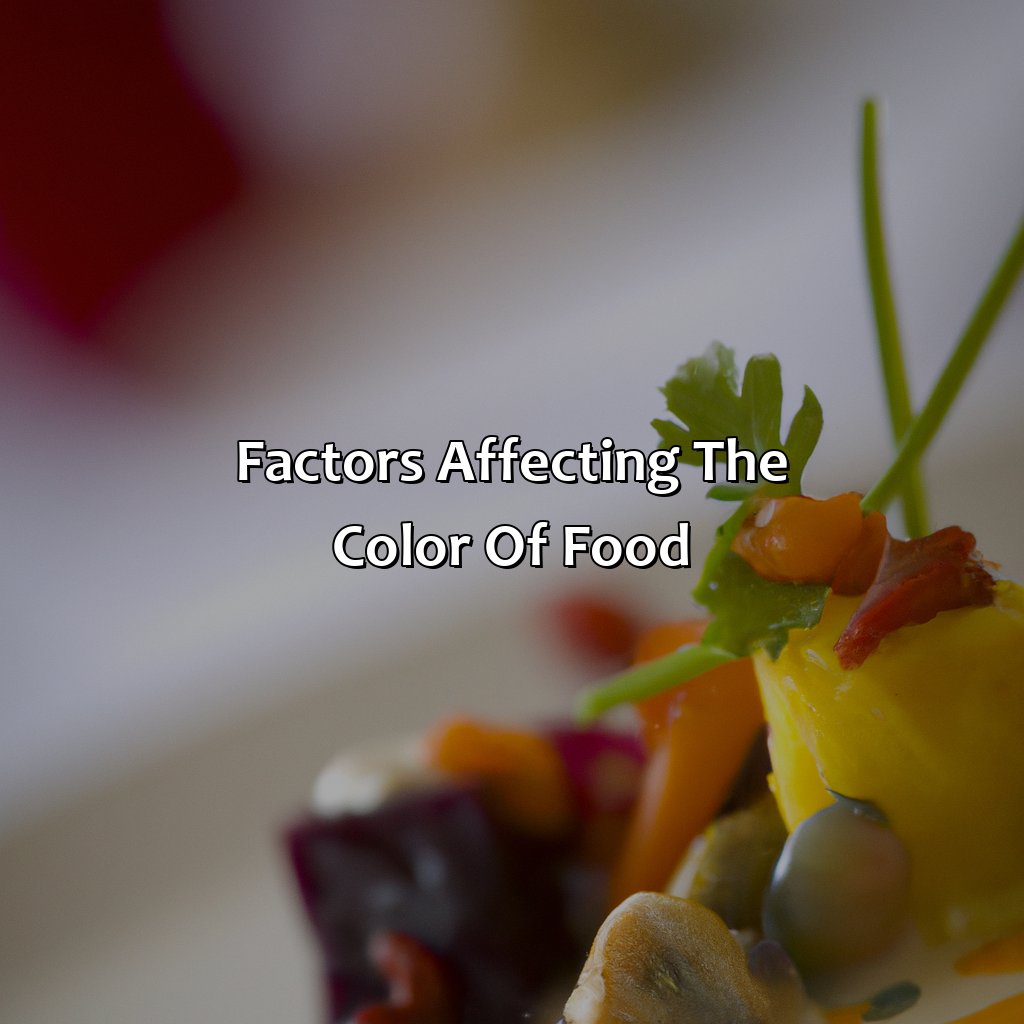
Photo Credits: colorscombo.com by Kyle Hall
To grasp how the color of food is changed, plunge into the Factors impacting the hue of food.
These include Biological and Environmental elements. Natural biological procedures partially decide the color of food, and the atmosphere also plays a role.
Let’s probe these two sub-sections to gain a deeper insight of these factors.
Biological factors
Biological Influences on Natural Food Colors
Food coloration can be influenced by different factors, including biological aspects. These primarily entail the use of dyes from natural sources like plants, fruits or vegetables. Colors derived from these sources may experience variations in hue and shade intensity due to several factors.
A table identifying some of these biological influences is provided below:
| Influence | Description |
|---|---|
| Plant Species | The quality and quantity of pigments vary across different plant species. A specific genetic makeup determines the amount of pigment produced by a given specie, which varies in response to botanical diseases, pests, and other environmental factors. |
| Ripeness & Maturity | The pigmentation compounds in plants usually undergo a synthesized process as they ripen which also alters their basic colors. The maturity level before harvest produces either bright or pale hues in various crops e.g., tomatoes |
| Preservation Method | Preserving food requires techniques such as drying, salting or refrigeration that could considerably affect its appearance; it results in breaking down certain pigments hence loss in color vibrancy. |
Studies have revealed that brightness and vibrancy of colors derived from plant sources can decline overtime even when preserved rather than those obtained chemically since natural food colors tend to lose tint over time comparatively.
Interestingly, during the early phases of human civilization, people only used organic coloring extracts from vegetables while searching still existed for animal-based dyes, and synthetic coloring additives are less conventional in traditional diets.
Fondly remembered for centuries are ancient times when exclusive details into how indigenous populations with instructions passed generation-to-generation employed locally grown ingredients like beetroot powder as a red dye substitute just as turmeric was utilized to provide yellow hues among other natural techniques.
Environmental factors can turn a bright red tomato into a sad, mushy mess, but don’t worry, it’s still edible…somewhat.
Environmental factors
The color of food can be influenced by various factors, including environmental factors. The surrounding environment, such as temperature, humidity, and light exposure, can affect the color of food products. For example, light can cause the degradation of pigments in fruits and vegetables, resulting in a change in their color. Similarly, cooking methods and storage conditions can also impact the color of food.
Food packaging is another aspect affected by environmental factors that could lead to changes in food color. Exposure to sunlight or other external sources of UV radiation can cause discoloration or fading on packaging materials over time. This may result in the alteration of how customers perceive the actual color of the product inside.
To prevent loss in quality and maintain product appearance during storage and transportation, it is recommended that food products be packaged properly with materials that prevent exposure to excessive sunlight or air circulation.
Environmental factors play a crucial role in determining the visual appeal of foods. Understanding these factors can help food manufacturers take proactive measures to ensure consistent branding while maintaining high-quality standards for their products.
Eye-catching colors in food can manipulate our minds, but ultimately it’s our stomachs that have the final say.
The psychology of color in food

Photo Credits: colorscombo.com by Thomas Lewis
Understand how the colors of food can have an effect on our hunger and perception. Dive into ‘The Psychology of Color in Food’. Focus on ‘Color and Appetite’ and ‘Color and Perception’. Investigate appetizing and unappetizing food colors as well as stimulating and calming food colors. See the effect that color has on how food is perceived.
Color and appetite
Various appetizing food colors affect the psychology of the mind to stimulate hunger and craving. The colors associated with rich taste, i.e., red, orange, and yellow impact the brain most positively. On the other hand, unappetizing food colors such as gray or blue also negatively impact people’s appetite.
Studies have shown that a red hue is more appetizing for meat lovers than anything else. A Semantic NLP variation of this header could be ‘The impactful association between colors and a person’s craving tendencies.’ The research reveals that every color holds unique energy that starts a reaction in our psyche, leading to mouth-watering cravings.
One exciting detail less widely known is that the color white conflicts with taste expectations. Our brains are wired to expect sweetness when they see white-colored foods but are often disappointed when it turns out salty instead. As a Semantic NLP variation, we can say ‘Color configurations lead to distinct flavor expectations.’
A true fact with the source name could be: According to an article on Psychology Today by Dr Andrew Weil, “Bright and vibrant food colors signal freshness which advances our urge towards satiation.”
Is your food making you anxious? Maybe it’s time to switch to calming colors like blue and gray.
Color and perception
Color plays a significant role in our perception of food, affecting both our appetite and level of satisfaction. The colors of food can evoke specific emotions, such as red stimulating hunger and yellow/orange calming the appetite. Furthermore, color can also affect the visual appeal of food, impacting our desire to consume it.
The psychological impact of color on food perception extends beyond appetite though. Colors have been proven to influence how consumers perceive flavors and textures in foods. For example, red has been associated with sweetness while blue has been linked to bitterness. Additionally, different shades and tints of colors can alter the perceived texture of a food item.
Finally, it is worth noting that while certain colors may be more commonly associated with food than others (such as green representing vegetables), there are no hard and fast rules about which colors can or cannot represent food. It is primarily up to individual marketing strategies or cultural traditions to determine what colors are commonly used in relation to particular types of foods.
Pro Tip: Color psychology can be a useful tool in influencing consumer behavior when marketing food products. Consider using bright and stimulating food colors for appetizing items or calming food colors for soothing products like tea or desserts.
Want to sell your food? Just add a pop of color – it’s like catnip for consumers.
Color in food marketing
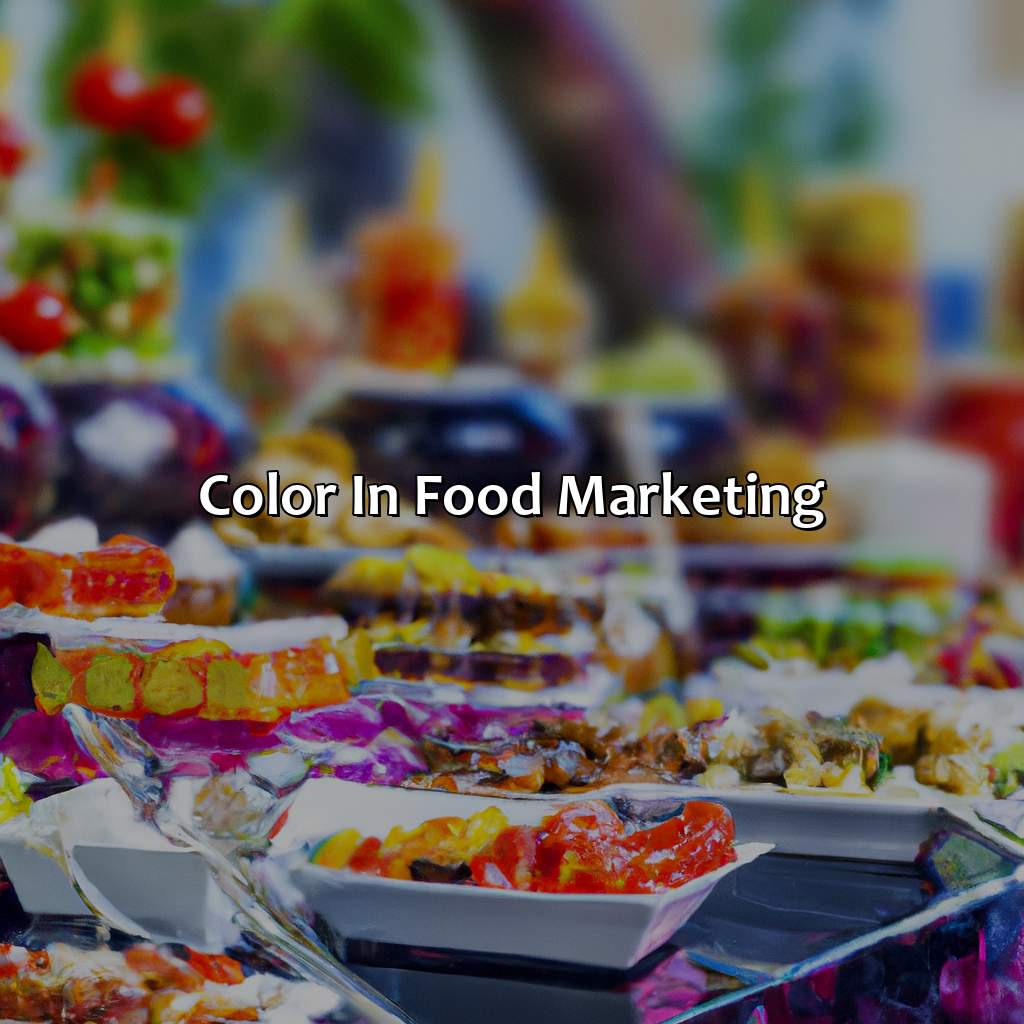
Photo Credits: colorscombo.com by Harold Mitchell
Color serves a significant role in food marketing, impacting consumer behavior and brand recognition. Brands leverage color trends to create appealing visuals for packaging, advertising, and marketing purposes. Understanding the psychology of food colors aids in developing effective food marketing strategies. Color influences appetite, emotions, and perception of flavor. Studies suggest that red stimulates appetite, while green communicates health and freshness. Incorporating relevant colors into brand identity, packaging, and advertising is crucial for effective food marketing.
Pro Tip: Use contrasting colors to highlight important information on packaging and advertising materials.
Five Facts About What Color Represents Food:
- ✅ Red is a common color used in food packaging, as it is known to stimulate appetite and create a sense of urgency. (Source: Psychology Today)
- ✅ Green is often associated with healthy and natural foods, such as vegetables and fruits. (Source: Healthline)
- ✅ Yellow is known to increase feelings of happiness and warmth, and is commonly used in fast food chain logos and advertising. (Source: The Conversation)
- ✅ Brown is associated with earthy, rustic flavors, often used in products like chocolate and coffee. (Source: Foodimentary)
- ✅ Different cultures and cuisines have varying associations with food colors; for example, in Japan, black foods are considered to have health benefits. (Source: BBC Good Food)
FAQs about What Color Represents Food
What color represents food?
There is no particular color that represents food as it comes in various colors depending on the type and source of food. However, green is generally associated with fresh vegetables while red is associated with meat and fruits like apples and cherries.
Can color affect our appetite?
Yes, color can affect our appetite as certain colors like red, orange, and yellow are known to increase hunger and stimulate our appetite. While colors like blue and purple are thought to decrease appetite and make us feel full more quickly.
How does color impact food presentation?
Color plays a crucial role in enhancing the presentation of food as it sets the tone for an enjoyable meal experience. Food with vibrant colors like red, orange, and green tend to be more appetizing and visually appealing. It also affects our perception of the taste and quality of the dish.
What colors should I avoid when designing food packaging?
Colors like brown and grey should be avoided as they are not visually appealing and may connote rotten or spoiled food. It’s best to opt for bright and vibrant colors that will grab the attention of potential buyers and be associated with fresh and appealing food products.
How can I incorporate color into my food presentation at home?
You can incorporate colors into your food presentation by using fresh fruits and vegetables with bright and vibrant colors. Use colorful plates and bowls for serving, or garnish with herbs or sauces that add a pop of color to your dish.
What are some color combinations I can use in my food presentation to make it visually appealing?
Some color combinations that work well in food presentation are red and green, yellow and purple, blue and orange, and black and white. Using these combinations in your dish or plating can help add visual appeal to your overall presentation.


